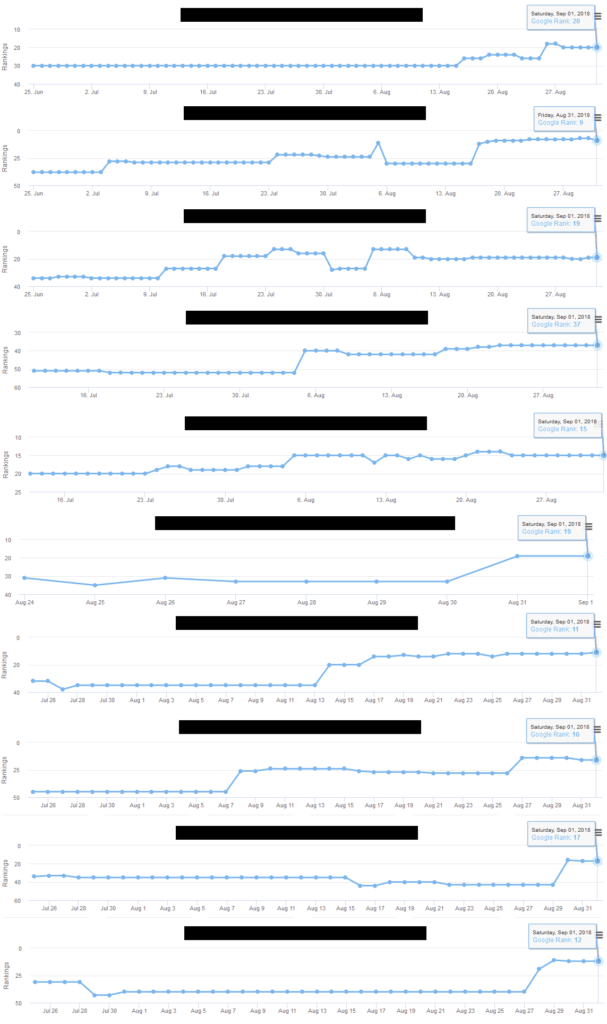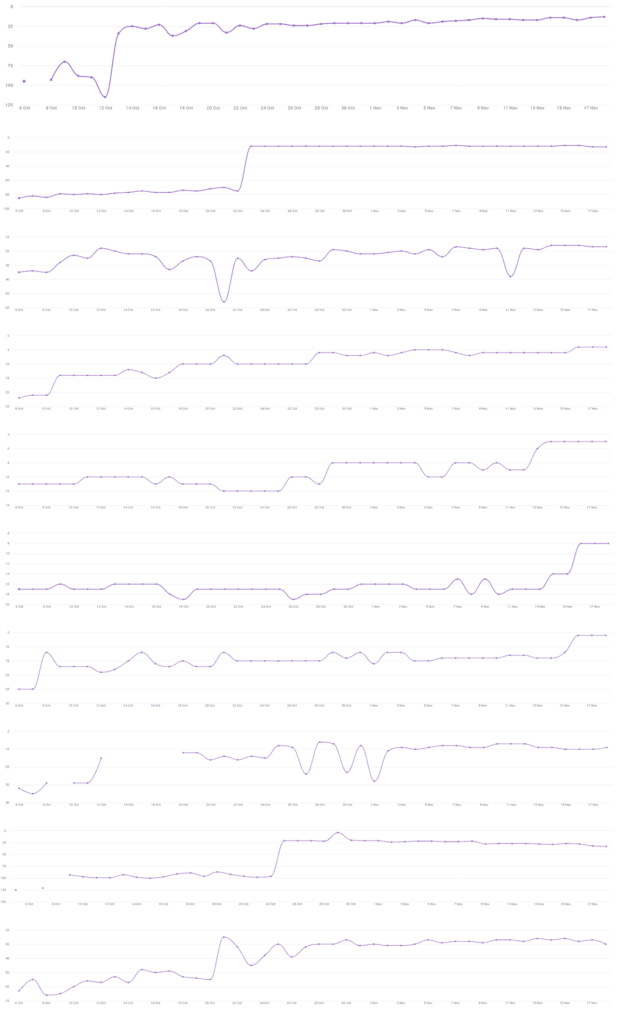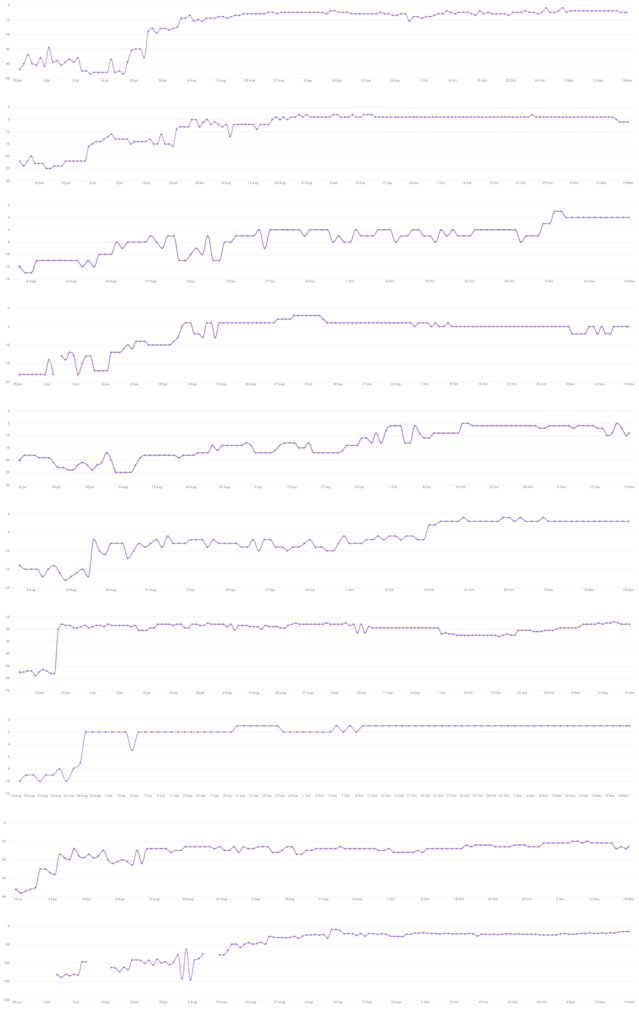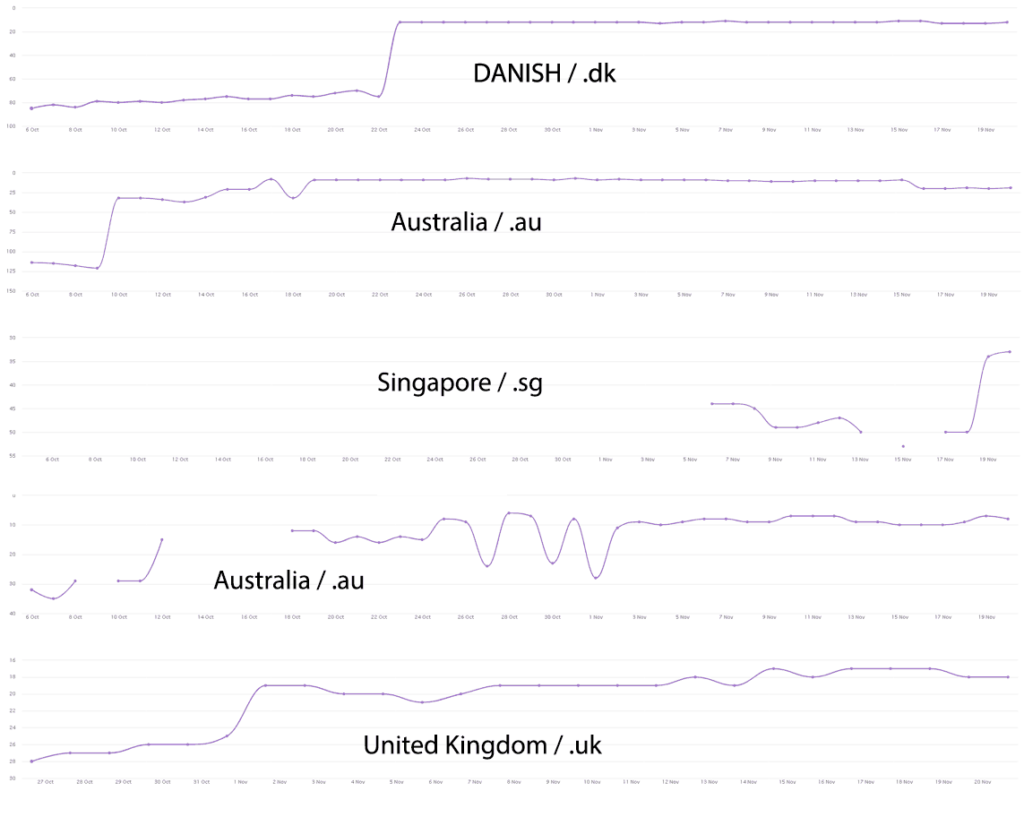PBN Myths: Stop Making These Mistakes
As a link seller, there is nothing worse than seeing misinformation about how certain things work. Unfortunately, it's seemingly impossible to correct the ignorance that's out there. It gets to a point where you want people to believe the garbage that's being spread so that you know you're that much further ahead.
The following are some pretty common "myths," recurring themes, or customer questions I've seen on PBNs.

3 PBN Myths
1. Only Full Posts on the Homepage Work
A typical network site features giant homepage posts dishing out links to 25+ sites at a time.
Here is a link to see what I mean: http://www.skeleton.hatredio.design/
This site features a skeleton WordPress setup, 25 recent posts, and is set up with "Full-posts" on the homepage. For some reason, there is this universally accepted way of performing PBN posts, and they require full posts on the homepage for the juiciest of juice.
At the end of the day, the goal is to please customers. When they have certain expectations of how something is done, you want to adhere to those expectations. While I'm not saying this doesn't work, I'm saying it shouldn't have to be the standard for how things are performed.
There are straight up people who think this is the only way network sites can be set up in order to pass link juice to your money site. This is dead wrong and the sites look like a pile of flaming dumpster trash. It's also a pretty massive footprint to get only homepage links.
I've decided to break that mold and do things as I see fit in order to make things last longer for customers. These changes were inspired by deindexings back in mid-June of this year when I lost 20 network sites because my sites became associated with blogs that look like the above. This resulted in a re-evaluation of how things are being done.
Over the past 6 months, I've had to reject tons of orders because people have links similar to my example. While I may be losing money, at least I won't have to replace a couple thousand dollars worth of websites.
Some data to back this up because everyone loves data
I had planned to release this back when I did it but stuff happens and my main priority isn't to blog.
I told my VA to take the new sites and setup skeleton setups with a single excerpt on the homepage. Here were some of those results.

The above is a representation of 10 unique network sites sending a single link to 10 different target sites (or a 1:1).
While that's well and good, my service obviously has 12-15 excerpts on the homepage.
The sites end up looking similar to this: http://finance.hatredio.design/
The next question is does this result in positive rankings across client sites?
Yes.
The results after making the changes in June have been the best I've had since starting this service in 2015.

The above sites received 10 posts on a drip for 30 days (my standard). I have a lot more screenshots, but those are all being saved for when I compile them for my sales page.
Hopefully, you get the idea. If excerpts didn't work, the above results wouldn't be possible. Not to mention stuff like Guest posts and Link insertions wouldn't work either.
2. Posts Rolling-Off the Homepage are Useless
This topic is somewhat controversial. To preface, I'll explain what the general belief on this topic is:
One-off posts have no actual value because while they may temporarily increase rankings, eventually they roll-off the homepage meaning rankings will inevitably drop.
No. Stop. You're traumatizing me.

This topic has been covered in detail in the past, it's similar to a "Link Echo" or a "Link Ghost." You can learn more in a 2014 post by Rand Fishkin if you aren't familiar.
Earlier this year I made the conscious decision to continue tracking orders until I made this blog post. Some of the clients above are repeat customers and I knew that they actively build links and as a result, I knew their rankings would be maintained and they would have continuous growth.
So when I hear people say that one-off posts offer no "value," it confuses me. If the belief above was true then that would mean rankings should plummet after all posts leave the homepage.
Comparatively, we can look at Rental links. In a PBN rental you will pay a fee in order to maintain your blog post on the homepage of the network site. These fees vary, but with non-payment comes the removal of your link from the blog post and the post rolling into the inner-pages of the domain.
In this case, you will experience a ghost/echo for a number of months (completely random number of days/months) because your link no longer exists on the domain.
In the case of one-offs we have links that are on the blogs forever, or until the site becomes deindexed, stops providing positive juice (usually because of link loss), or in some cases has too many indexed pages (personal preference for retirement).
Please note that I'm not saying that all sites stick. I'm saying that in order for long-term rankings to stick you need to maintain link building and growth. In nearly all cases where clients report ranking drops it's because they bought 10 posts from me, saw increased rankings, and then completely stopped link building. That isn't natural.
3. Traffic, Relevancy, Foreign Language Targets & ccTLDs, and Minimum Metric Requirements
Minimum Metric Requirements
I'm actually dumbfounded when I read messages from people that request this type of stuff. I haven't used Moz or Majestic metrics as a way of gauging domain power in a long time. With that said the number of times I've been asked about the "average metrics" of my network is too many to count. Every time someone asks this question, my answer is "I have no idea."
I did a pretty lengthy blog post on domain analysis back in May. If you haven't read it, I'd suggest checking it out. You can find that blog post here: http://www.www.hatred.io/analyzing-pbn-domains/.
TL;DR: I'm after strong referring domains to the homepage. The strategy outlined in that blog post I've used for a very long time and it will continue to work as long as Big G' values links. We aren't relying on algorithm generated metrics, we're looking at links.
Foreign Languages
So this is actually a decent question and I can see why it's asked a lot. At the end of the day, a link is a link is a link. Meaning my English domain will move your Danish, German, French, Spanish, Australian, etc domain in their respective SERPs.
To go further, my ccTLDs (.co.uk, .co.nz, .es, .pt) will move your English and Foreign domains in their SERPs. Truth be told, a HUGE portion of my network consists of ccTLDs and clients get movement regardless.
While these still work, I'm not a huge fan of using foreign anchors. I do allow stuff like branded anchors, naked URLs, author names, and generics. So most of the stuff below that doesn't have English as a first language, I used one of those options for anchors.
This Patent for ways of detecting spam is also another reason: Learn more

Listed above are 5 different sites in various regions. They all received 10 posts from my ccTLDs.
Relevancy and Traffic
So while we're on the topic of foreign language movement, we can discuss relevancy and traffic. I'm not a huge believer in "relevancy" being a factor. I will completely agree with the fact that niche relevant sites do tend to look better as a way of future proofing yourself.
I also believe the same thing in terms of traffic. Sites that are niche relevant and have traffic look better as an outsider, but these posts often cost an arm and a leg. On average a decent guest post is going to run you $100+.
I decided to grab the first Danish site and look at the links that support it.
The Danish site is related to the outdoor niche. The niches and traffic of the PBNs that support it are:
| Niche | Organic |
|---|---|
| Golf | 10 |
| Video Games | 0 |
| Gender Equality | 111 |
| Radio | 0 |
| Automotive | 0 |
| Psychic/Spiritual | 0 |
| Security Consultants | 0 |
| Agriculture | 0 |
| Travel | 0 |
| Sports | 6 |
The client had an overall movement of 80s to 11th. So would you say relevancy and traffic were a significant factor?
An analysis I like to reference for this question is one Terry Kyle ran in 2017. It can be found via his blog on Archive.org:
Again, I completely agree with people who think relevancy and traffic are ways of future-proofing themselves but are they a significant factor when it comes to ranking and passing juicy juice around the table? No.
Wrapping this Up
Unfortunately, I had another myth related to diminishing returns based on increased outbound link percentages, but the test was run so long ago that I can't seem to find the data in my Skype files. Which stinks because another one of the most common questions is "What is the average number of OBL on the homepage?"
This question is somewhat moot considering I've swapped to excerpts, but as noted above, the number of posts is 12-15.
This test wasn't run by me because I opted not to split the costs. My buddy ran it himself and was nice enough to share it with me and was going to allow me to share it in this blog post.
Oh well, maybe for next time.



































